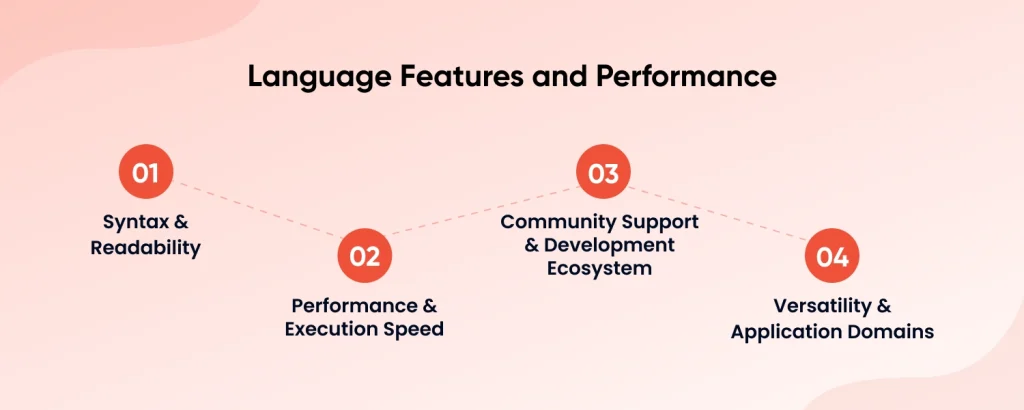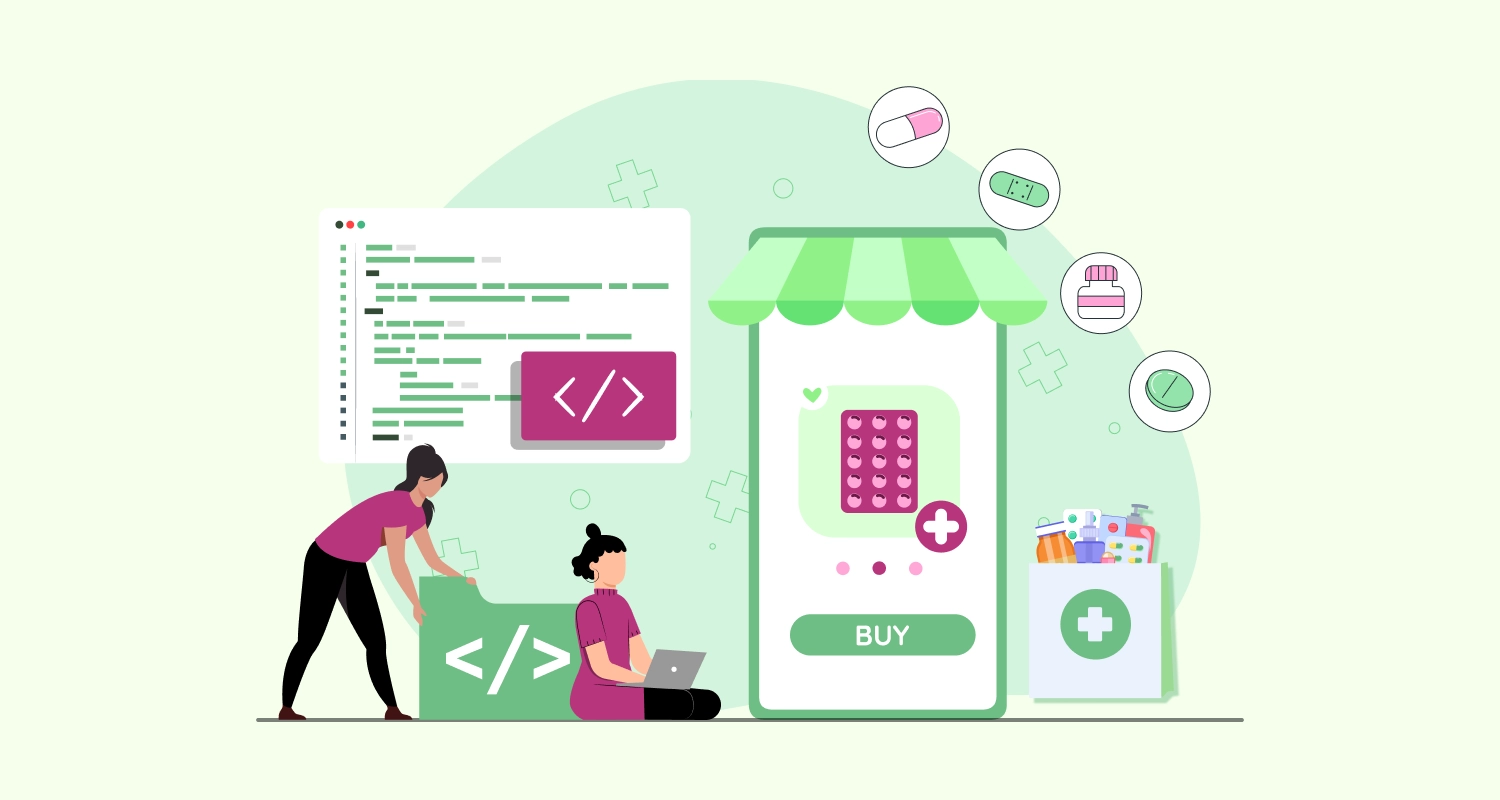Evidently, in this fast-paced programming world, Swift and Python stand out. As we approach 2025, one issue looms large: Which language will be voted as the developers’ choice? Python or Swift? The post takes a deep dive into the intricacies of Swift and Python. It finds out their strong points and weak aspects which might help in understanding more about the constantly changing computing world.
Swift, developed by Apple’s lab, proves its worth very fast. Its modern language, performance-optimization routines, and integration with the rest of Apple’s ecosystem make it one of the most used programming languages nowadays. However, the Python language, which is the prominent one in usage among data scientists, web developers, and automators, still manages to cast its spell to the users as it owns much of the ease of use, versatility, and library support.
In terms of popularity metrics on Google, the PYPL(Popularity of Programming Language) Index lists Python in the topmost place. Python holds a 28.59% market share whereas the amount of Swift is 2.74%. As a matter of fact, Swift amazed the audience in simply a few years, even though it was introduced to the market in 2014. Are you interested in the discussion of “Swift vs Python“? If it is yes, this is the right place for you!
Background and Evolution of Both Languages
Understanding the origins and evolution of programming languages is critical for comprehending their current status. Swift, launched by Apple in 2014, evolved as a reaction to Objective-C’s limitations, providing a more contemporary and developer-friendly option for iOS and macOS app development. The Swift programming language is the brainchild of Chris Lattner, and his creation was influenced by C#, Python, etc.
Swift has seen numerous important revisions since its introduction, providing features like as optionals, type inference, and protocol-oriented programming, solidifying its status as a reliable and efficient language for developing Apple ecosystem apps.
On their hand, Python has its origin which dates back to the late 80s and was released in 1991 by Guido van Rossum. Python initially arrived as a general-purpose language with an emphasis on simplicity and ease of reading. Now it is a powerful tool that is accepted all around on the web, data analysis, machine learning, automation, and so on. Python has been greatly improved and supercharged since it was first released and continues to get better every year, with newer versions steadily introducing better core language features and a standard library.
Swift vs Python: A Comparative Study
Language Features and Performance

When comparing Swift vs Python, it’s critical to examine their unique language features and performance characteristics to determine their applicability for particular use cases and sectors. This is a full analysis:
Syntax and Readability
Swift: Swift is known for its simple and short syntax, and it provides a contemporary programming style with features such as optional, type inference, and closures. Its syntax closely matches normal English, making code easier to comprehend and maintain.
Python: Python is well-known for its simplicity and readability, and its basic syntax and large whitespace indentation make it easy to use. Its syntax allows for speedy development and encourages developers to produce code that is simple and intelligible. This majorly inspires organizations to hire Python developers.
Performance and Execution Speed
Swift: Designed for performance, Swift has fast execution times and memory management features, making it ideal for resource-intensive activities and high-performance apps.
Python: While Python prioritizes simplicity and developer productivity, its interpreted nature can lead to slower execution times than compiled languages such as Swift. However, optimizations using libraries such as NumPy and Cython might help to alleviate performance constraints for specific applications.
Community Support and Development Ecosystem
Swift: Swift has strong assistance from Apple and a lively development network, along with frequent updates, documentation, and gear. Its ecosystem incorporates an extensive range of frameworks and libraries for iOS, macOS, watchOS, and tvOS development.
Python: Considered one of the most important and maximum active developer groups, Python presents a massive guide through special documentation, pip package deal management, and a rich atmosphere of third-party libraries catering to a huge variety of domain names and packages. All these are part of Python development services.
Versatility and Application Domains
Swift: Swift, first of all, is focused on building apps for the Apple universe: iOS, macOS, watchOS and tvOS. Nevertheless, due to the availability of related phases, it can be applied to higher languages as well.
Python: Python is a trendy programming language used in many fields which include web programs, data analytics, system mastering, cognitive computing, automation, and others.
Industry Adoption and Trends
Examining Swift and Python’s market adoption and current patterns provides significant information regarding their popularity. This makes it easy to declare the winner in the Swift vs Python battle in 2025.
Job Market Demand
Swift: Job possibilities for Swift developers are increasing, particularly inside the Apple ecosystem, where iOS, macOS, and watchOS developers are in high demand in fields including mobile app development, banking, and gaming. Hire dedicated Swift developers to grab this nascent market!
Python: Python is still one of the most in-demand programming languages in the employment market, with applications ranging from web development to data science, artificial intelligence, machine learning, and automation.
Usage Statistics and Project Trends
Swift: Although Swift has been long connected with the Apple lines of software, it is now starting to be adopted in server-side and cloud apps. The apps that often use frameworks like Vapour and Kitura are usually those that rely on these systems. iPhone app development services rely on Swift, therefore, deep knowledge and skills in the language are essential.
Python: Python’s versatility and simplicity of use have been behind its widespread use in different studies; developers use the language for web frameworks like Django, and Flask, and data science libraries like Pandas, NumPy, and machine learning frameworks like TensorFlow and PyTorch.
Case Studies and Real-life Practices
Swift: Businesses in the medical, financial, and entertainment industries have developed new applications that employ Swift for patient monitoring in healthcare, financial transactions for safety, and immersive gaming for a truthful experience.
Python: Python’s flexibility and rich ecosystem have allowed it to be used for a whole lot of tasks, including web application creation for e-commerce platforms, analysis of data for business intelligence, computer science for research, and workflow automation processes.
Persisting Future Trends, and Emerging Prophecies
Swift: With the unwavering keynote spending on Swift as a new frontier on server-side and cloud formations, the language is uniquely positioned for future growth and adoptions that extend beyond conventional Apple development.
Python: Python’s flexibility and focus on practical use exemplify it as an optimal technology suited to adapt to the new forthcoming innovations such as AI, ML, data analytics, automation, and augmented intelligence, ensuring its relevancy and importance in the future.

Ecosystem and Library Support
Swift and Python’s usefulness, efficiency, and adaptability are heavily influenced by their ecosystems and library support. Let’s get into the details.
Library Availability and Popularity
Swift: While Swift’s environment is broadly speaking focused on iOS, macOS, and server-facet programming, it is usually a growing variety of libraries and frameworks. Popular libraries consist of Alamofire for networking, Realm for database administration, and SwiftUI for developing consumer interfaces.
Python: Python counts as one of the most fundamental languages. Its library is the source where users can extract a plethora of useful packages to meet their project’s needs. Python can therefore give developers access to many useful tools, such as web frameworks, for example, Django and Flask, which at the same time may help the data analysis.
Integration with Emerging Technologies
Swift: Given Apple’s emphasis on innovation, Swift is well-integrated with new technologies such as augmented reality (ARKit), machine learning (Core ML), and server-side Swift for cloud-native apps. This connection enables developers to smoothly include cutting-edge technology.
Python: Python’s adaptability extends to its integration with new technology which includes TensorFlow, PyTorch, and scikit-learn, which might be frameworks for Artificial intelligence (AI) and Machine Learning (ML). Python’s robust support for data evaluation, visualization, and automation makes it a remarkable desire for developing fields that include statistics, technological know-how, and automation.
Developer-Friendly Features and Resources
Swift: Apple’s devotion to developer experience is reflected in Swift’s rich tools, which include the Xcode IDE and Swift Package Manager. Additionally, Apple offers substantial documentation, tutorials, and community support tools to help developers on their Swift journey.
Python: Python’s developer-friendly traits, along with its intelligible syntax, interactive shell (Python REPL), and full-size standard library, help to explain its enchantment among developers. Furthermore, Python has a huge online network, considerable documentation, and active assist forums, making it accessible to developers of all skill degrees.
Cross-Platform Compatibility and Interoperability
Swift: While Swift is mostly linked with Apple platforms, initiatives such as Swift for TensorFlow and SwiftNIO seek to improve Swift’s interoperability and cross-platform compatibility. Despite this, Swift’s position imposes more constraints as compared to Python which is apparently more inclusive in its interoperability across different platforms.
Python: Python is a known cross-platform language that supports interoperability across Windows, macOS, Linux, and several other operating systems. Python’s friendly partnership with other languages on different platforms greatly boosts its convenience in many of the current cases.
Security Features
Swift Security Features
- Swift prioritizes safety and security by design, including features like optionals, type safety, and memory safety to protect against typical programming errors and vulnerabilities.
- Its robust type system and intelligent memory management lessen the likelihood of memory-related problems such as buffer overflows and memory leaks.
- Furthermore, Swift’s use of contemporary cryptographic primitives and secure coding techniques offers strong encryption and protection against security risks.
- The language’s integration with Apple’s ecosystem also takes use of platform security capabilities like sandboxing, code signing, and app transport security to improve application security across iOS, macOS, watchOS, and tvOS.
Python Security Features
- Python’s focus on simplicity and flexibility may result in fewer built-in security mechanisms than Swift.
- While Python provides libraries and modules for implementing security mechanisms like as encryption, authentication, and access control, developers must take proactive steps to adopt and adhere to security best practices.
- Python’s wide third-party ecosystem offers additional security tools and frameworks; nonetheless, the quality and security of these libraries vary, necessitating rigorous examination and validation.
A Summarized Table of Difference between Python and Swift
| Features | Swift | Python |
| Type Safety | Strongly typed, reducing type-related errors | Dynamically typed, offering flexibility |
| Memory Management | Automatic memory management, preventing leaks. | Manual memory management, the potential for leaks |
| Platform Support | Primarily for Apple ecosystems | Cross-platform interoperability(Windows, Mac, Linux) |
| Performance | Compiled language, offering high execution speed. | Interpreted language, potentially slower execution. |
| Supported Languages | R Language, Scala, Java, PHP, JavaScript, Anaconda, Perl | C language, Ruby, Python, C++, JavaScript, Go, Rust, C#, etc. |
| Companies using the technology | Netflix, Airbnb, Facebook, Spotify, etc | Slack, Uber, Reddit, IBM, etc |
Final Words
Selecting which programming language is preferable between Swift and Python in 2025 is dependent on the unique project needs. While Swift excels in performance and integration within the Apple environment, Python’s adaptability, broad ecosystem, and cross-platform compatibility make it a top choice for a wide range of applications. Finally, the type and aims of the development project will settle the debate of Swift vs Python promptly.
Frequently Asked Questions
What Are the Roles of Python and Swift in Development Respectively?
Swift is a programming language that has been made by Apple and it is almost fully used for creating apps that are iOS, macOS, watchOS, and tvOS mainly run. Python, as a programming language, has many usages including web development stuff, data analysis, artificial intelligence, scientific computing, etc.
Which Language Is Better for Mobile App Development: Swift or Python?
Swift is usually better regarded for mobile app development especially in iOS and macOS, due to native integration of Apple’s ecosystem and hardware advantages. Python (a rather multi-purpose language though) isn’t widely used in comparison with mobile app development.
Can Swift and Python Be Used in Website Development?
You can use Swift and Python languages both to do web development. Swift may be deployed on the server side, while Python is mostly connected to a lot of frameworks including Django and Flask which are mostly used for web applications.
What Are the Primary Distinctions between Python and Swift, the Programming Languages?
Swift is mainly designed for the Apple ecosystem, in which several programming tasks are performed such as iOS, macOS, and server-side programming, but Python is a language of choice, which is employed in various disciplines, such as web development, data analysis, and automation.







